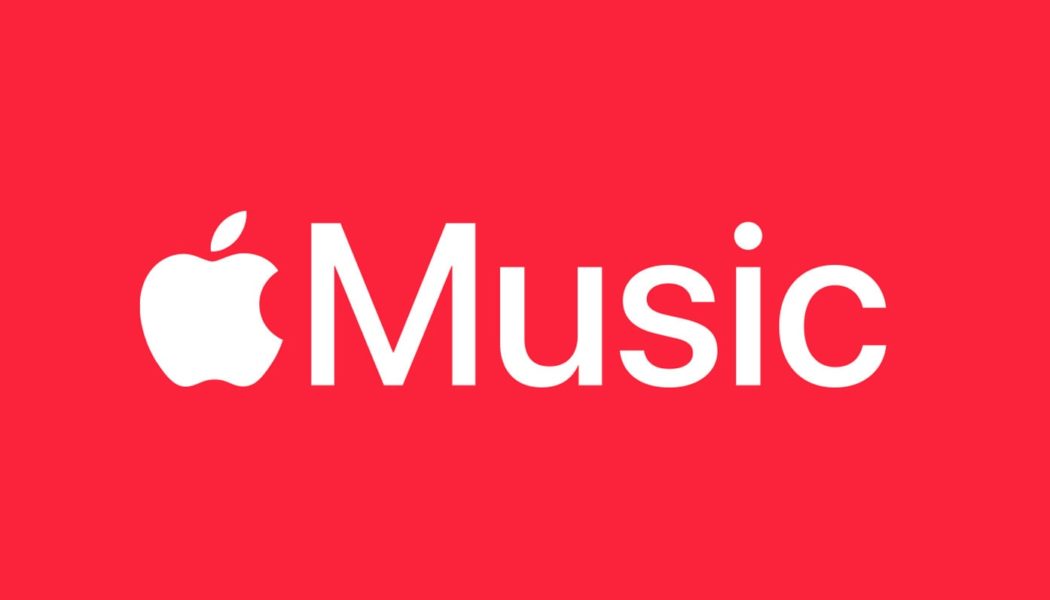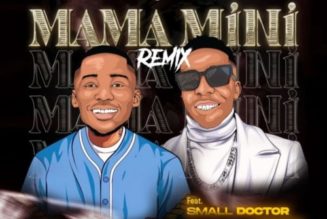All products recommended by Engadget are selected by our editorial team, independent of our parent company. Some of our stories include affiliate links. If you buy something through one of these links, we may earn an affiliate commission. All prices are correct at the time of publishing.
It’s difficult to pinpoint the best music streaming service for everyone. Most of the popular options available today hit on the essentials: a giant and diverse library of music that you can access à la carte, sort into playlists, download for offline listening and play across multiple devices. Most are available for around the same price, too. That said, there are subtle yet significant differences in features and philosophy among them that can determine which will fit into your life best. To assist those thinking about trying a new music app, we’ve spent the past few months using most popular music streaming services simultaneously, testing their limits and seeing how they adapt to our input.
Quick Overview
Most well-rounded: Apple Music
No music streaming service is perfect, but for many, Apple Music should get the closest to covering all of the necessary bases. It has a library of more than 100 million songs, all of which are available in lossless streaming quality for no extra cost. Its user interface doesn’t make it too hard to get to your music library and strikes a balance between useful algorithmic recommendations and smartly curated content from actual people. It’s one of the few music streaming services that lets you upload your own music files and naturally it’s tightly integrated with Apple devices.
Apple Music’s ALAC files have a minimum resolution of 16-bit/44.1kHz, which is the same quality you’d hear from a CD. A smaller but still significant selection can stream at higher resolutions up to 24-bit/192kHz. A significant number of albums are also available in Dolby Atmos surround sound mixes, or “spatial audio.”
Lossless streaming isn’t a game-changer for most casual listeners. You need a decent set of wired headphones and an external DAC (or a good speaker system) to take full advantage, and the upgrade isn’t so stark that non-enthusiasts will care. That said, even if the difference is subtle, a lossless file does sound better than a more compressed one, particularly in the way it draws out higher-frequency sounds from cymbals, strings and the like.
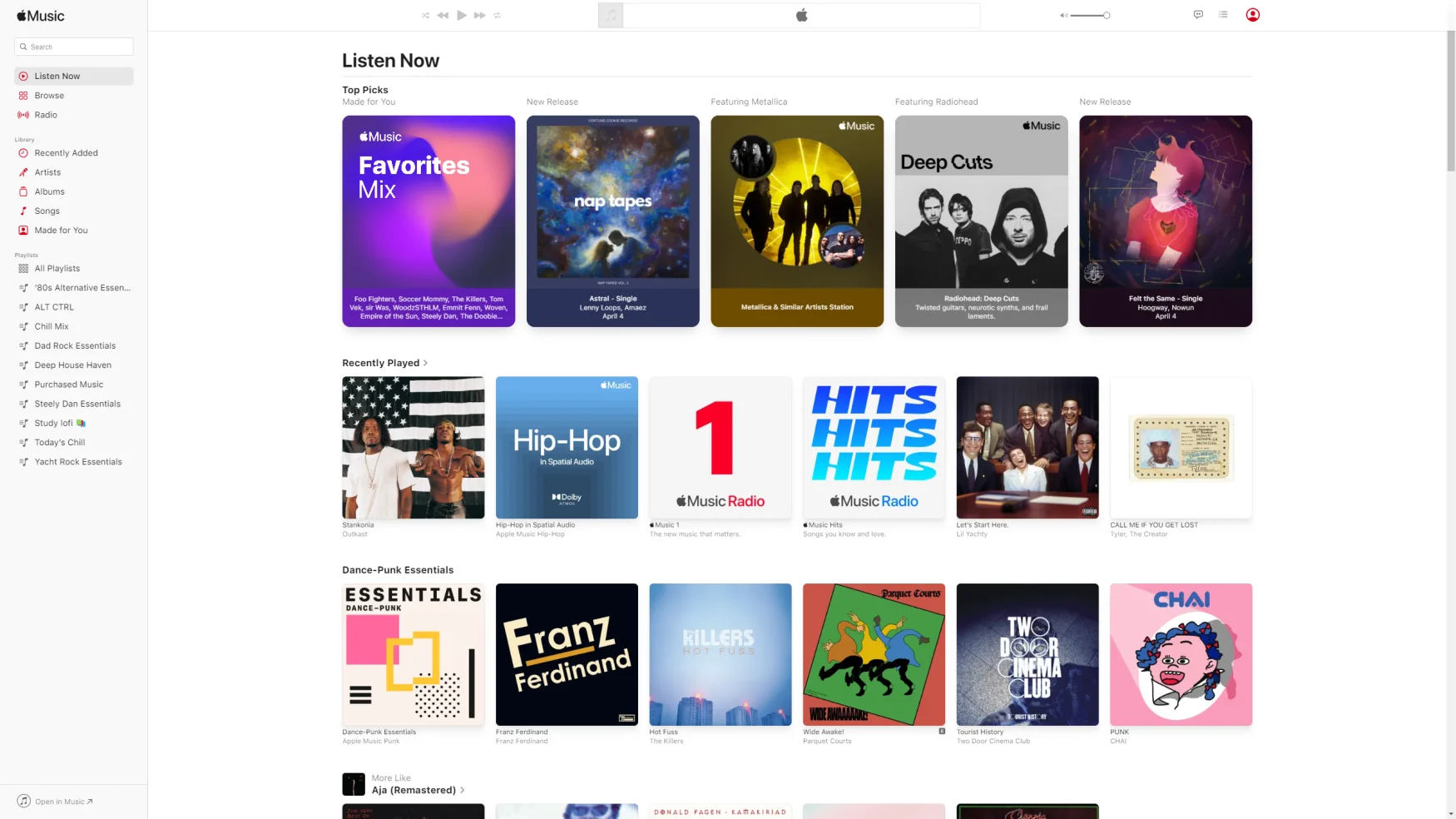
Photo by Jeff Dunn / Engadget
Spatial audio, on the other hand, is more of a fun gimmick: technologically impressive, yes, and sometimes genuinely immersive, but just as likely to make a record sound less natural.
Relative to other music streaming services, Apple Music’s UI is perfectly serviceable. In general, it emphasizes human curation more than peers like Spotify or YouTube Music. It’s not as great an emphasis as it used to be, and the home “Listen Now” tab can be a smorgasbord of hit-and-miss suggestions based on your recent listening history. Still, the service is littered with clever, editor-picked playlists. The default search page holds several different genre tabs, each of which holds relevant playlists, music videos and a typically spot-on list of “essential albums.” Artist pages often spotlight a group’s most essential works alongside playlists of “deep cuts,” artists that likely inspired them, artists that were influenced by them and so on.
Streaming radio stations are one of Apple Music’s biggest differentiators. There’s a regular rotation of shows that feature artist interviews and have a sort of pre-internet feel. The main tabs often make room to highlight new buzzy releases, and you can find top charts for different countries and cities. All of this gives Apple Music an air of taste, something that can help you find music but prioritizes a personal touch.
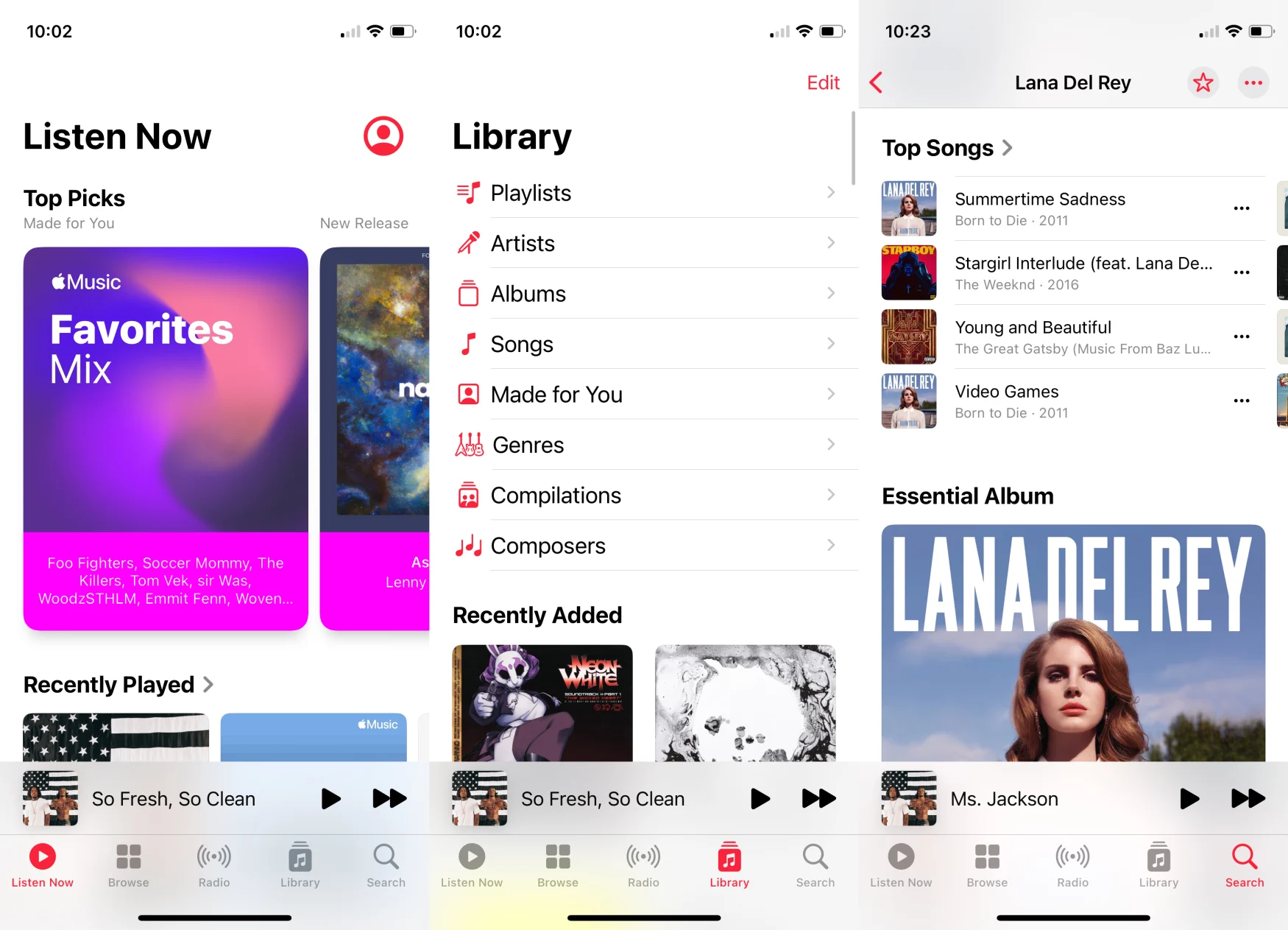
Photo by Jeff Dunn / Engadget
Beyond that, getting a simple view of your saved artists, albums, songs and playlists is uncomplicated. You can reliably search for tracks by lyrics, and there’s a great lyrics view for impromptu karaoke sessions. Creating playlists and downloading albums for offline listening is straightforward, and you can start a radio station from any song. While your imported music won’t be available in lossless quality, being able to upload music at all is a great boon for those with big iTunes libraries. Just note that you’re capped at 100,000 tracks that aren’t already available in the app.
If you enjoy classical music, Apple recently launched an Apple Music Classical app that’s dedicated to the genre and comes included with most Apple Music plans. Booting those works into a separate app is somewhat cumbersome, though.
There are still some drawbacks. While Apple Music has apps for Android, Windows and web browsers, the Windows app is only available in a buggy “preview” form as of this writing and there’s no lossless streaming in a browser. It’s best used with Apple devices. There’s (bafflingly) no way to see a list of your “loved” songs in the mobile app. There’s no free tier or annual family plan, either, and the individual plan is $1 more a month than some competitors.
Free tier: No
Individual plan: $11/month or $109/year
Family plan: $17/month (up to 6 members)
Voice plan: $5/month (only usable with Siri)
Student plan: $6/month
Best for music discovery: Spotify
Spotify leans much harder on algorithmic suggestions than Apple Music, but having a giant treasure trove of user listening data for so many years has allowed the service to fine-tune its music recommendation engine. This is the main reason to consider it: No service is more accurate at reading the music you like and serving up worthwhile suggestions for other songs you might enjoy (even if its UI is arguably getting worse with every update). As the most popular music streaming app, it’s also available on a wide array of devices.
Spotify is particularly impressive at creating playlists. “Discover Weekly” is famously adept at digging up unheard tracks and artists that align with your tastes. “Release Radar” is similarly impressive at spotlighting new tracks from artists you follow and those with complementary sounds. A selection of “Daily Mix” playlists blend past likes with deeper cuts from artists in your library and similar songs from ones who aren’t, then sorts them by mood as much as genre. Based on what you’ve been playing, you may wake up to one mix that’s mostly upbeat electro, another marked by soaring indie rock, and another with spacey hip-hop. While its selections can be more hit-or-miss, a new “Niche Mixes” feature lets you search for a mood or genre and have the app generate a relevant playlist. Simply following the algorithm down its rabbit holes makes it easy to find something you can enjoy in just a few taps.
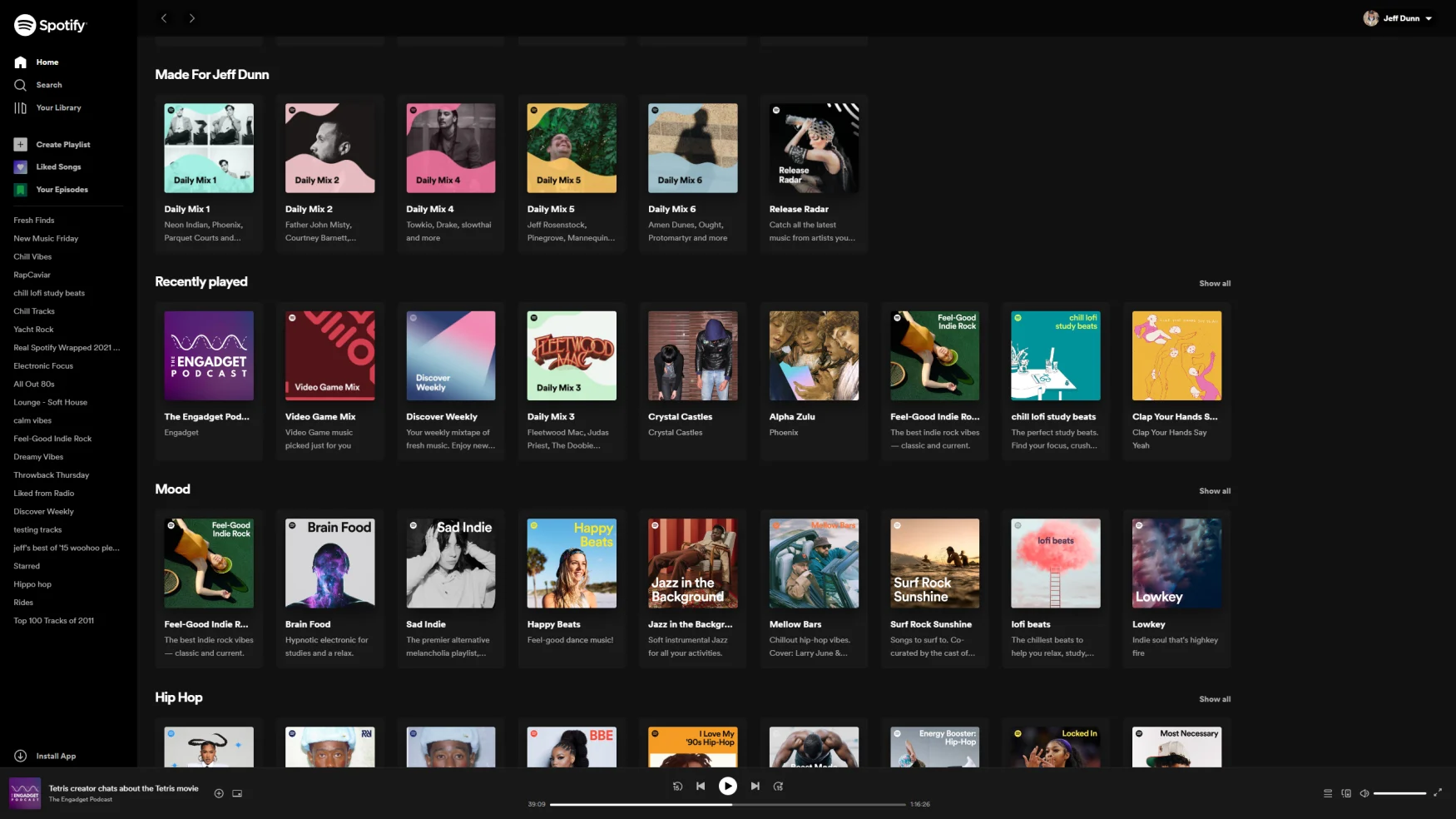
Photo by Jeff Dunn / Engadget
That said, there are still a ton of human-curated playlists to peruse as well. Regularly updated lists like “Rap Caviar,” “New Music Friday” and “Viva Latino” may not be tailored specifically for you, but they’re clearly programmed by knowledgeable people in-tune with current trends. A huge range of less frequently updated playlists based on genres, eras and vibes give the same impression. There’s a human touch here; it’s just not emphasized as much as it is in Apple Music, so which you’ll prefer depends on how willing you are to let an algorithm lead the way.
Spotify’s interface isn’t bad, but some recent changes have made it harder to use. The home tab has rows of suggestions based on your recent listening history. I went through a big yacht rock phase while researching this guide, for example, so my homepage became peppered with playlists like “Soft Rock Classics,” “All Out 70s,” and “Totally Stress Free.” It wasn’t all stuff like that, but the point is that the service will sensibly morph and adapt as your listening habits change.
Sorting and searching through your own library is relatively clean, and a playlist with all your liked songs is featured prominently in the “Playlists” section. There’s a useful lyrics view for sing-alongs. Search usually works as it should, letting you look up music by title, lyric, artist or even context like “workout” or “studying.”
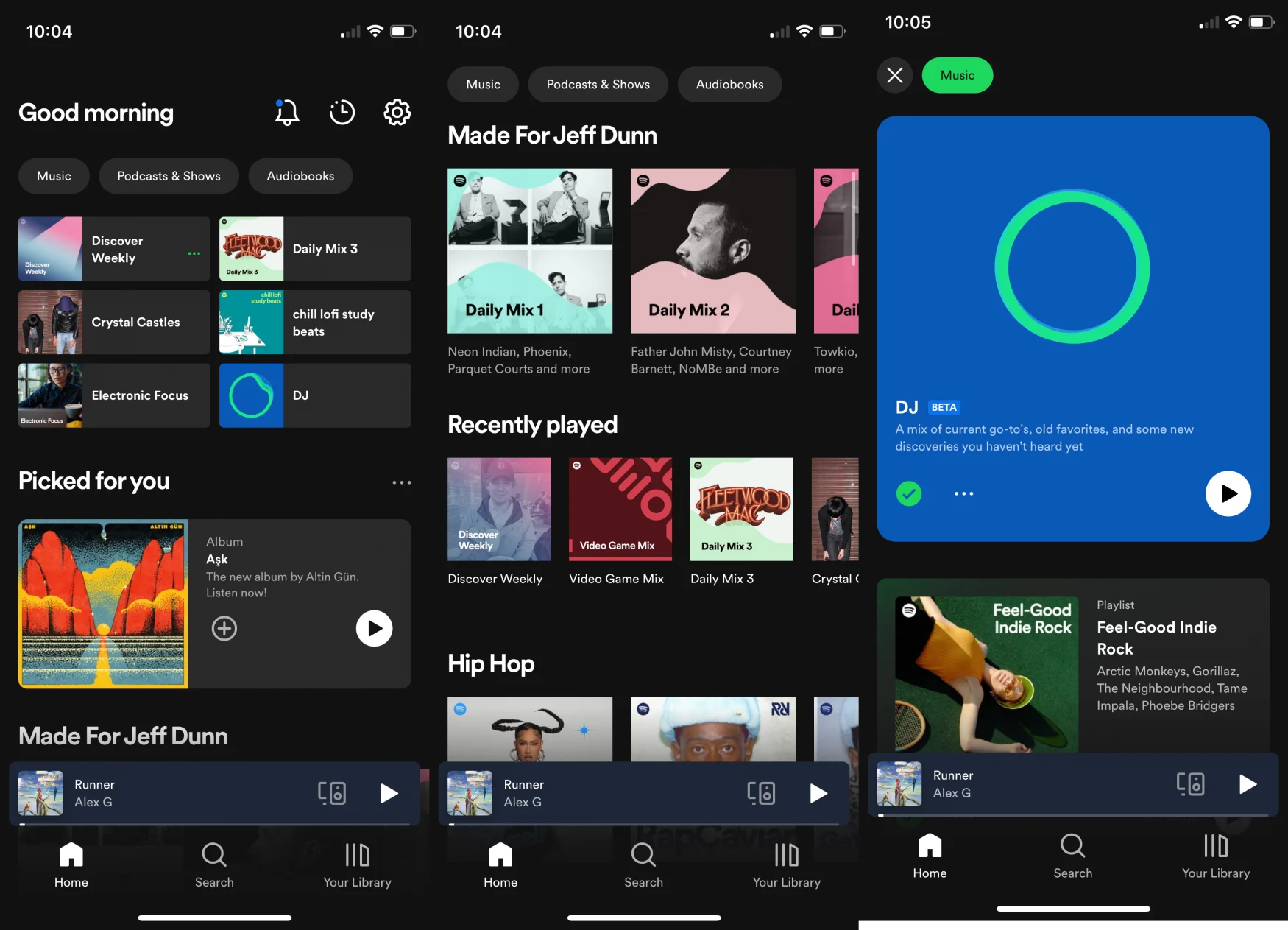
Photo by Jeff Dunn / Engadget
Making and sharing a playlist is a breeze. Artist pages aren’t as comprehensive as Apple Music’s, but they do include a list of upcoming tour dates, with links to tickets from sites like Songkick, AXS and Ticketmaster. The search tab has dedicated pages for various genres and vibes, from “Jazz” and “R&B” to “In the car” and “League of Legends.” You can start a radio station from any track, too, though this might repeat songs over time.
Spotify has made a huge push into podcasts and audiobooks in recent years, snapping up exclusive deals with several popular shows along the way (for better or worse). Some may find this convenient, but it makes the UI feel cluttered. A row with “Your shows” is displayed right at the top of the home tab, which includes not only the shows you’ve subscribed to, but annoyingly, ones you’ve recently put on just once. Apple Music and many others completely omit podcasts, so they’ll be less aggravating if you’d prefer your music app to focus solely on music.
On the mobile app, you can filter the home screen by music, podcasts and audiobooks, but Spotify recently revamped these to look more like TikTok-style feeds with huge, autoplaying suggestion cards. This may look fresh, but scrolling through an endless feed, one or two suggestions at a time, is not an efficient way to find content. Similarly, the prominently featured AI-powered DJ tool is technically impressive but also has a tendency to make jarring jumps from genre to genre. It speaks to an app that may be putting a little too much emphasis on its algorithmic prowess.
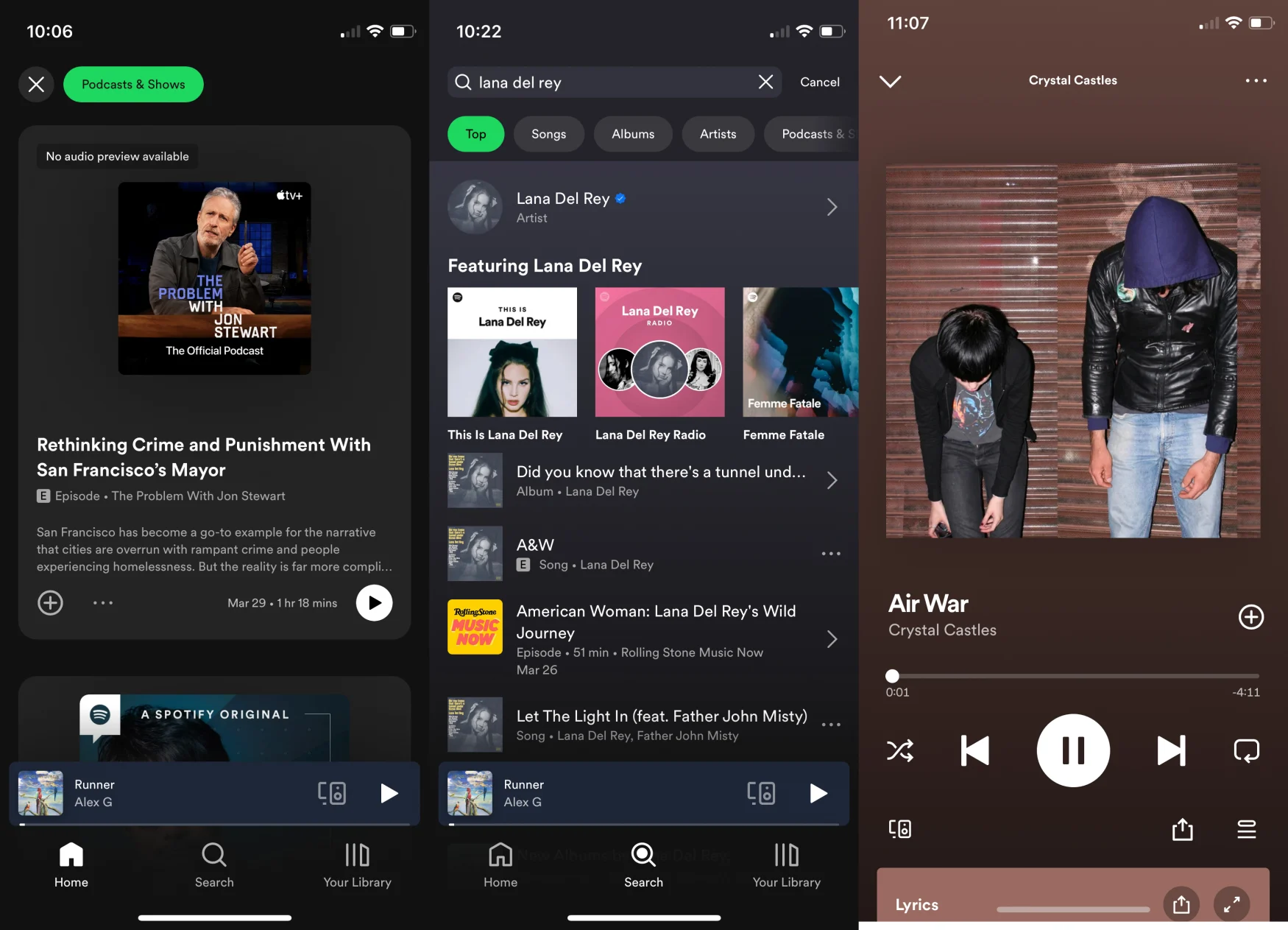
Photo by Jeff Dunn / Engadget
Spotify doesn’t offer lossless streaming, instead topping out at a relatively low 320Kbps bitrate using the Ogg Vorbis format. Web browser playback uses AAC and maxes out at 256Kbps. The company announced a CD-quality “HiFi” tier more than two years ago and says that’s still on the way, but how it’ll work and what it’ll cost remains unclear.
Spotify offers a more robust free tier than most of its peers. You’ll have to deal with ads, an even lower 160 Kbps bitrate, and limits on track skips and on-demand playback, but you can still listen to several personalized playlists and enjoy much of the library. For casual background listening, it may be enough.
While it doesn’t have a practical effect on your listening experience, Spotify is particularly terrible when it comes to artist payouts. Some music workers have even launched advocacy campaigns seeking fairer compensation and greater transparency. Music streaming isn’t an ideal setup for artists, particularly independent acts, but Spotify is the poster child for everything wrong with the current system.
Free tier: Yes
Individual plan: $10/month (12-month subscription gift cards for $99)
Duo plan: $12/month (2 members)
Family plan: $16/month (up to 6 members)
Student plan: $5/month
Best for more obscure music: YouTube Music
From a UI or streaming quality perspective, there’s little reason to choose YouTube Music instead of Apple Music or Spotify. Still, Google’s music service has a few unique selling points that could make it worthwhile. Arguably the most compelling is that it comes included with a YouTube Premium subscription. For $12 a month or $120 a year, this also removes ads from YouTube, lets you download videos for offline viewing and enables background playback. Those features alone are massive benefits if you’re a frequent YouTube user, and you get a full music service on top.
Even without the perk of ad-free YouTube, YouTube Music benefits from a close integration with the video platform. YouTube is home to a mountain of content not available on other top music streaming services and integrates it with your music library. If you’re into rare live performances, deep underground hip-hop, obscure soundtracks, nightmarish Neil Cicierega mashups or Aphex Twin remixes made entirely from the sounds of Super Mario 64, this is the service for you.
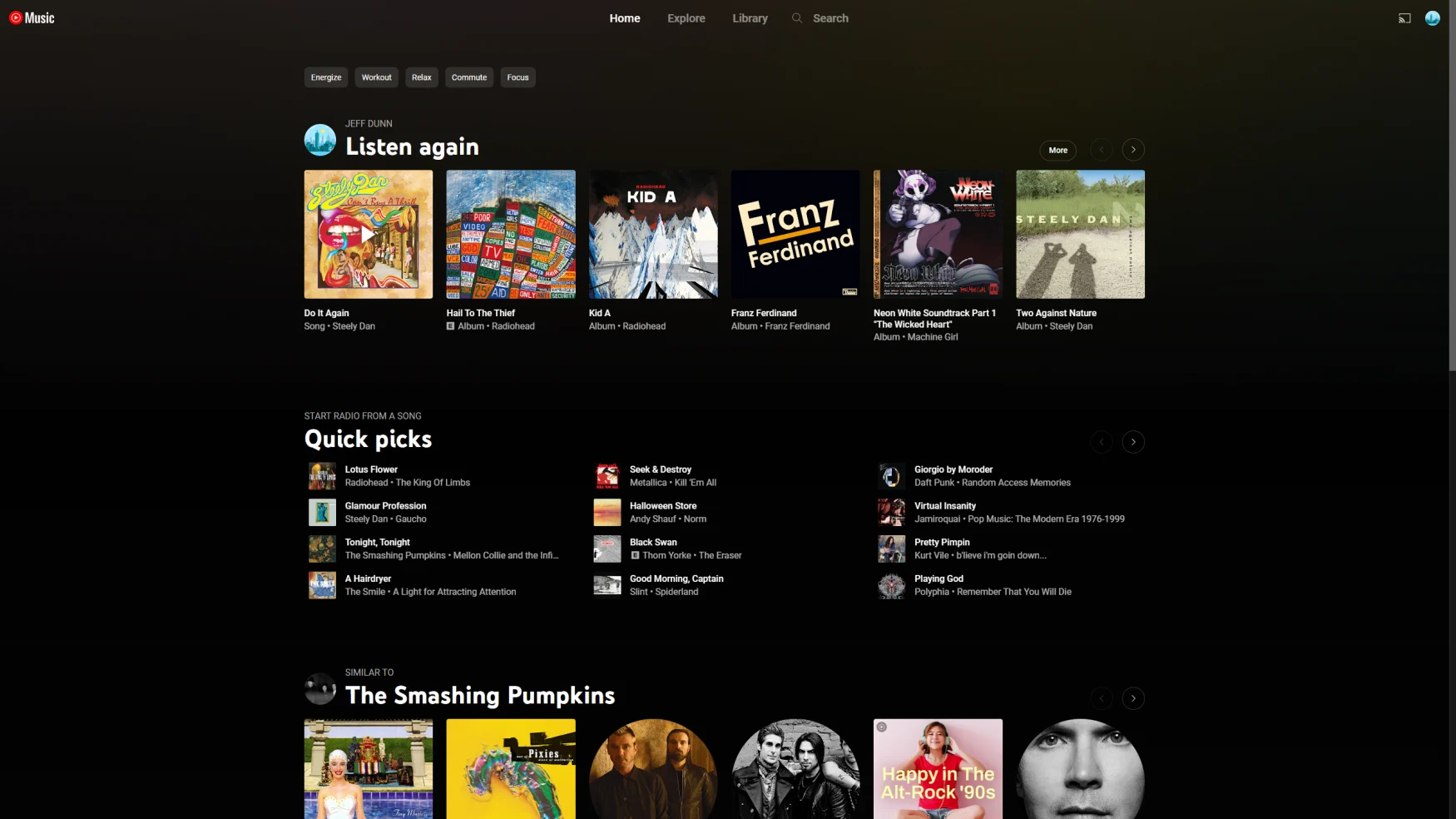
Photo by Jeff Dunn / Engadget
If you sign up for YouTube Music with the same account you use for YouTube, music you’ve liked on the latter will already be there and help inform the service’s recommendations. Naturally, this integration also makes YouTube Music the best choice for music videos, which you can swap to with a single tap.
Because it’s wrangling so much material, however, YouTube Music’s UI can feel scattershot and overwhelming. Scrolling down the home page reveals a hodgepodge of recent listens, liked music, curated and community-generated playlists, “similar to” suggestions, radio stations, music videos, algorithmically personalized mixes, new releases and top charts. Searching for an artist may display community playlists and covers underneath more traditional results; it also tends to blend singles with full albums, and it doesn’t display albums in chronological order. Content originally hosted on YouTube won’t integrate with your library as neatly as standard material, either.
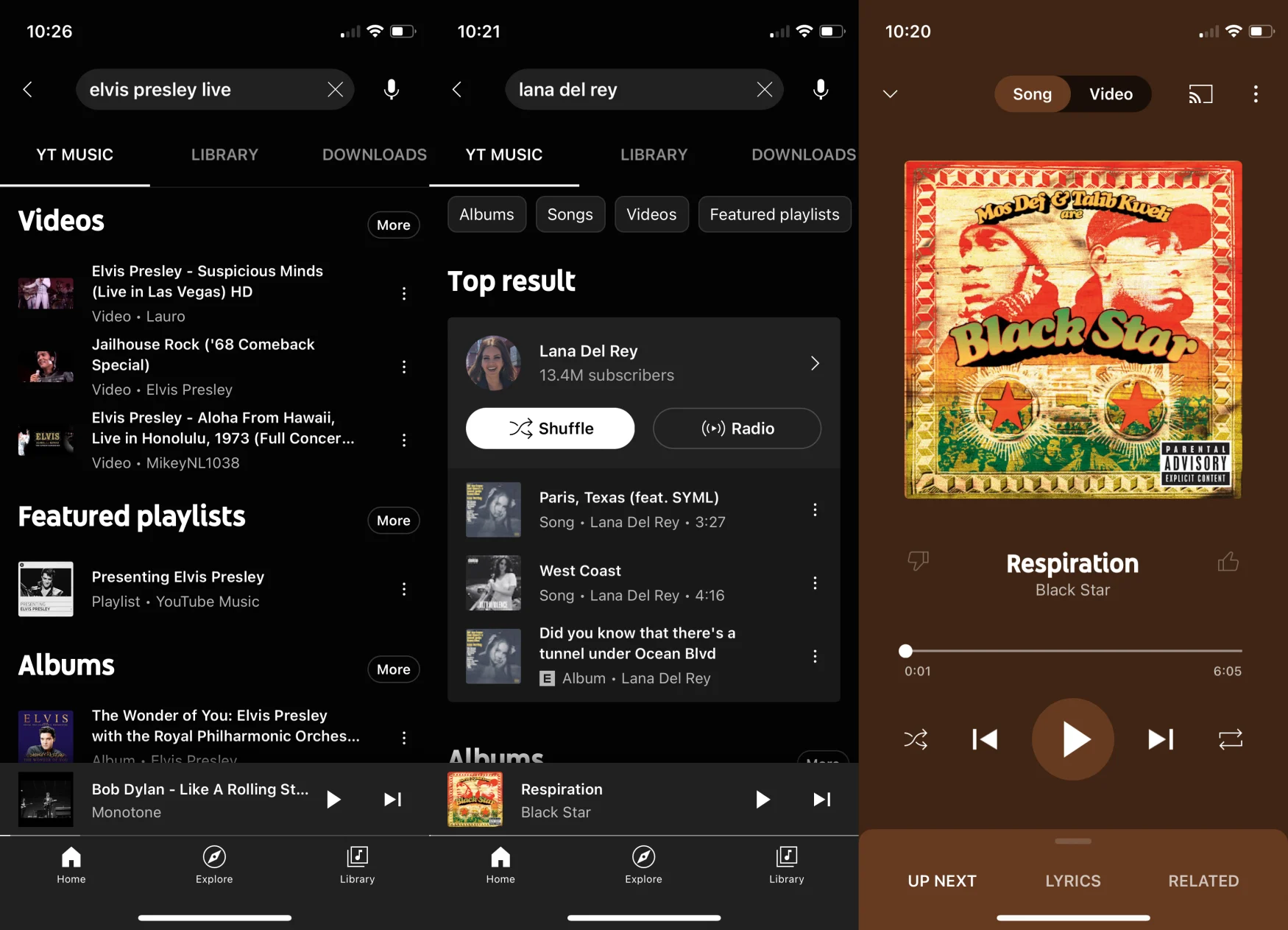
Photo by Jeff Dunn / Engadget
That said, the sheer mass of suggestions make YouTube Music good at surfacing new music you might like, and its “Discover Mix” works nearly as well as Spotify’s Discover Weekly. A few buttons at the top of the app can filter the home page’s suggestions to suit different moods: Relax, Workout, Energize, Commute or Focus. You can start a radio station from any song, though we also found this to regurgitate previously liked tracks more than we’d prefer. You can upload up to 100,000 of your own music files, too, which’ll be available even if you aren’t a paid subscriber (these won’t affect the service’s recommendations, however).
YouTube Music lacks lossless streaming and tops out at a relatively low 256 Kbps bitrate, so it’s not for audio enthusiasts. There’s no dedicated desktop app, and while there is an ad-supported tier, it stops playback whenever you exit the app on a phone and maxes at a rough 128 Kbps bitrate. All of your playlists are limited to a maximum of 5,000 songs. Podcast support is on the way, though as of this writing it’s unclear how that’ll look. Google also has a long history of killing its own products, including this service’s predecessor; we’d understand if that makes you skittish long-term, though the company seems committed to improving YouTube Music today.
Free tier: Yes
Individual plan: $10/month or $100/year; also available as part of YouTube Premium subscription for $12/month or $120/year
Family plan: $15/month (up to 6 members)
Student plan: $5/month
Another good option: Amazon Music Unlimited
Amazon Music Unlimited is a strong alternative to Apple Music and Spotify if you want podcasts and lossless streaming within the same app. Like Apple Music, it offers 100+ million songs in CD quality at no extra cost, with a smaller but ever-growing selection of FLAC files available in “Ultra HD” (24-bit/192kHz). Various tracks are mixed in Dolby Atmos or Sony’s 360 Reality Audio as well. Like Spotify, its catalog encompasses a wide selection of non-music content. Most of the major podcast networks are represented, and several shows are presented ad-free.
If you already subscribe to Amazon Prime, you can get Music Unlimited for less than its rivals, with an individual plan available for $9 a month or $89 a year. It’s not a massive discount, but $10 or $20 less each year isn’t nothing when the broad differences between music streaming services are so marginal. Naturally, Music Unlimited works the smoothest on Amazon’s fleet of Alexa devices as well.
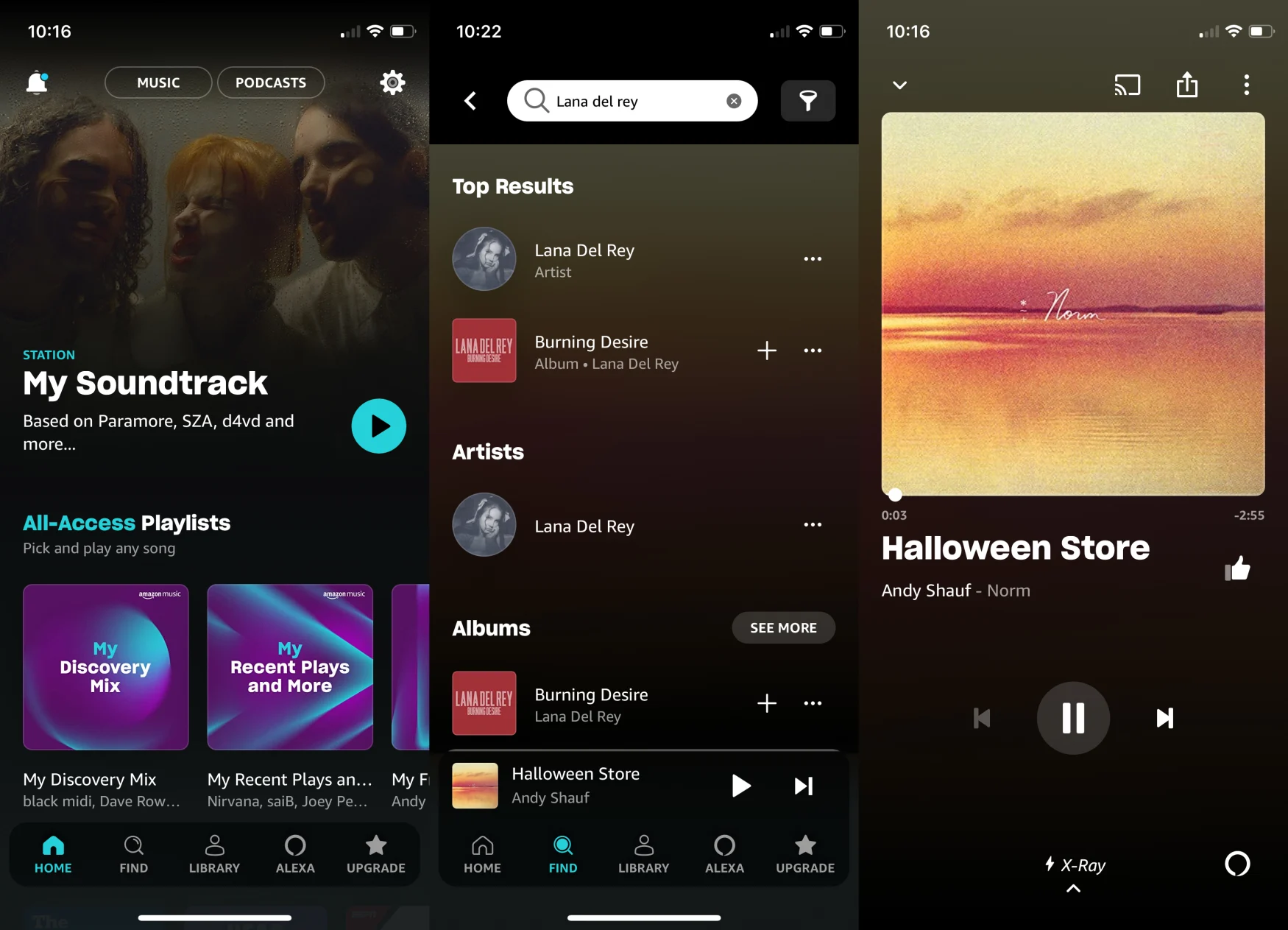
Photo by Jeff Dunn / Engadget
Music Unlimited’s UI is similar to its peers but has some annoyances. Amazon is more aggressive than Spotify when it comes to pushing podcasts that don’t align with your listening history. Radio stations and algorithmic playlists don’t display what songs are in the queue. Search isn’t as precise as the options above, and you can’t directly search through the saved albums on your library page. Amazon is also less proactive about surfacing new music you might like than Apple or Spotify. Even still, Music Unlimited delivers an impressive catalog for a potentially cut-rate price.
Free tier: Yes
Individual plan: $11/month; $9/month or $89/year with Amazon Prime
Family plan: $16/month or $159/year (up to 6 members)
Single device plan: $5/month (for one Echo or Fire TV only)
Student plan: $6/month
Honorable mentions
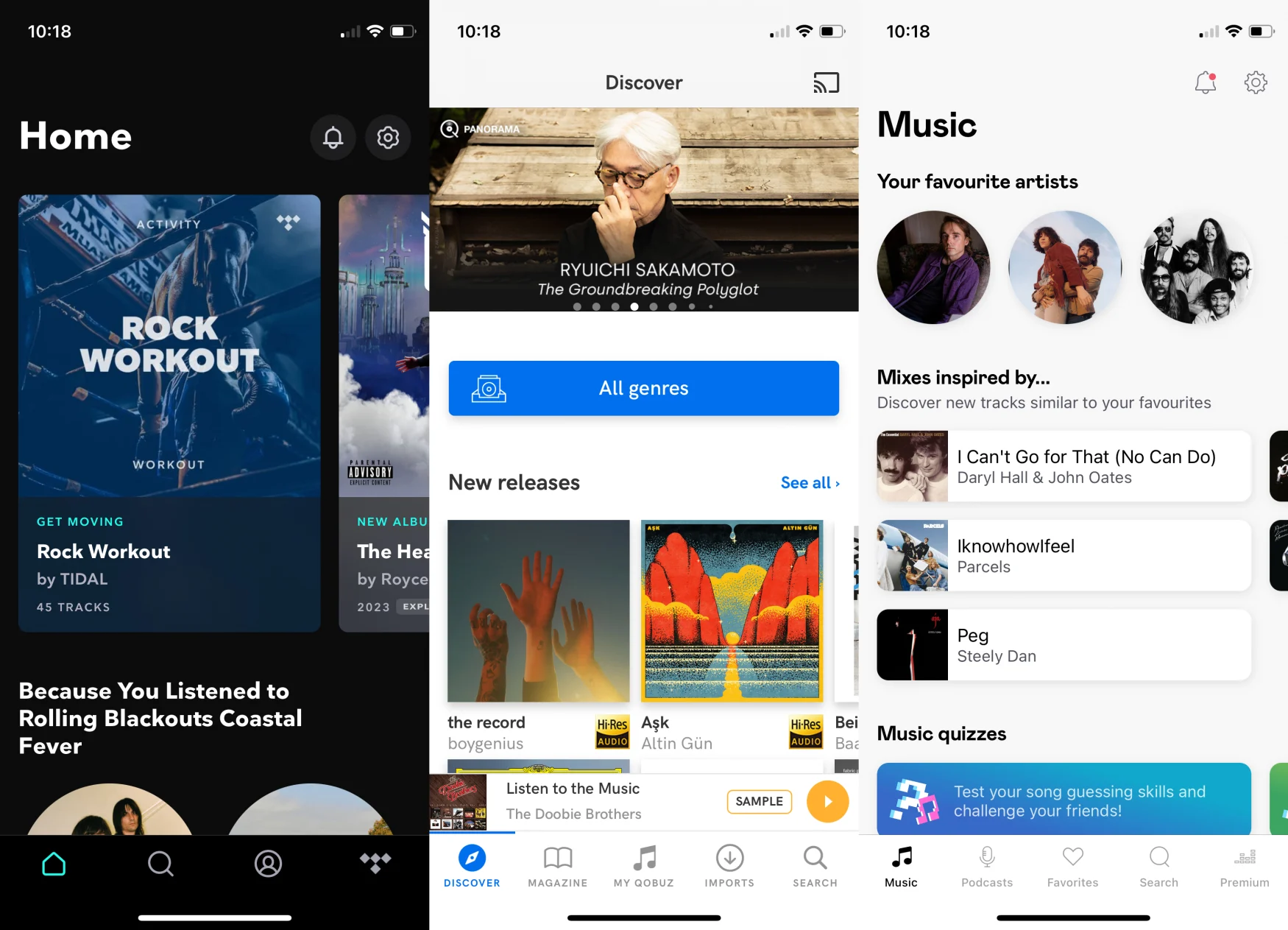
Photo by Jeff Dunn / Engadget
Tidal
Tidal offers the highest royalty rates for artists, CD-quality streaming at no extra cost, a free tier, a library of more than 100 million songs and an experience rich with human curation and feature-style content. If you’re a music nerd and determined to not give another monthly fee to a tech industry behemoth, it’s a good choice. Its apps aren’t quite as smooth as those from Apple Music, though, and its highest-resolution tier costs $20 a month. Those high-res tracks are also encoded in MQA, a partly lossy format that still sounds sharp but isn’t open-source like FLAC.
Qobuz
Qobuz is a favorite in audiophile circles, particularly when it’s paired with the Roon music player. Like Tidal, it downplays algorithmic discovery for a more considered, editorial-heavy approach. It offers up to 24-bit/192kHz FLAC streams and includes a digital music store for purchasing high-res downloads of various albums. It’s particularly attentive to classical music. But unless you want to avoid Apple or Amazon, you can get similarly high-quality streaming for a lower price. Some may also find the UI leans too hard on personal curation and requires too much effort to discover new music.
Deezer
Deezer has an attractive interface, a competitive library, CD-quality streaming and the ability to upload your own MP3 files to the service from a desktop. It’s at least worth a look if you want an independent service and don’t fancy yourself an audiophile. Though, its suggestions and playlists generally aren’t as robust as its competitors. It also lacks a high-res tier to match Apple, Amazon, Tidal or Qobuz.
